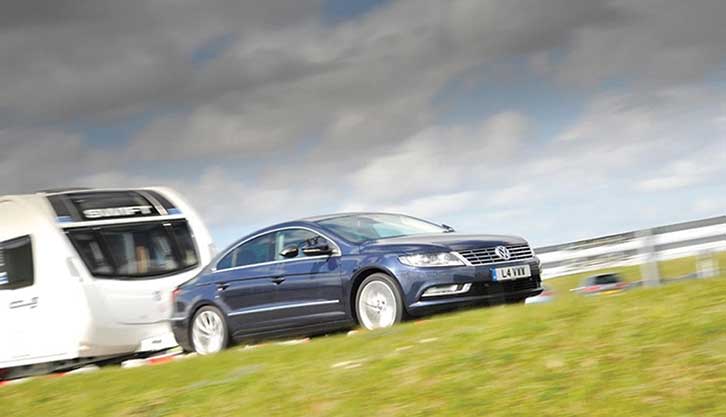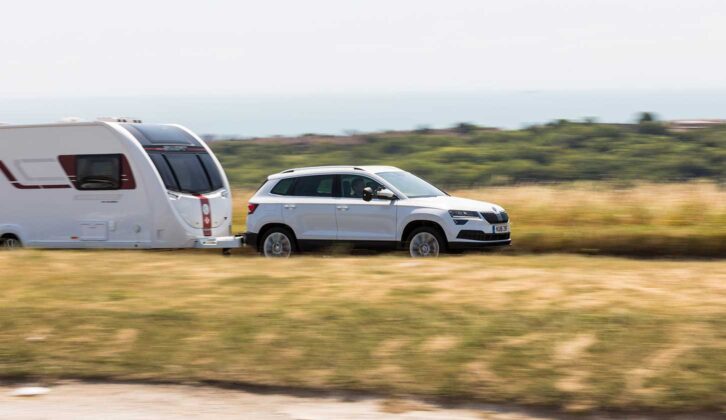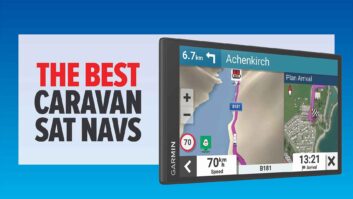One thing that it is important to bear in mind before you set off on tour is that the speed limits for towing a caravan or trailer on the back are different from those that apply for solo cars – on certain roads.
As we approach the start of the new season, it’s understandable that if you have one of the best tow cars, you’ll be looking forward to hitting the road and enjoying one of the major benefits of owning a tourer – the freedom to set off and explore whenever you want. However, before you head off on a tour, it’s crucial to have a good understanding of the speed limits when towing a caravan. After all, there are no specific signs on the road to tell you what these different towing limits are, and it can be confusing, particularly if you’re towing a caravan for the first time.
Whether you’re new to the world of touring, in which case it could be worth considering caravan towing tuition, or are a more experienced caravanner who simply wants a refresh, our guide is here to help.
We’re outlining the different towing caravan speed limits you need to be aware of to ensure you have a safe and legal experience on the road. Make sure you have a pair of the best caravan towing mirrors too, an accessory that plays a crucial part in making sure you and your tourer safely arrive at your destination.
Caravan speed limits – what you need to know:
The caravan speed limit on a motorway
The caravan speed limit on a dual carriageway
Towing a caravan on a single carriageway
The caravan speed limit on a motorway
If there are no temporary restrictions (such as from roadworks or alternative speed limits on smart motorways), then the speed limit for cars that aren’t towing a caravan or trailer is 70mph.
However, the speed limit when towing a caravan will be different – you will need to travel more slowly. In this case, 60mph is your limit.
This is a sensible maximum when towing on a motorway, helping to keep both you and your outfit safe and stable. Of course, if a temporary lower limit is being applied to all traffic, this must be adhered to.
What’s more, you’re not allowed into the outside lane if the motorway has three lanes or more. If there are only two lanes, it’s fine for you to use the outside lane for overtaking; as when driving solo, you should pull back into the left as soon as possible after your overtaking manoeuvre.
The caravan speed limit on a dual carriageway
The maximum speed at which you’re allowed to tow on a dual carriageway (assuming that there are no other temporary or permanent limits in place) is 60mph.
Somewhat confusingly, though, if the posted limit is 60mph, you’re also allowed to travel at that speed – you don’t need to drop your speed by 10mph in line with the rest of the traffic.

You must stick to any temporary or posted speed limit below 60mph.
Towing a caravan on a single carriageway
If solo cars are allowed to travel at 60mph on a single-carriageway road, the limit when towing a caravan is 50mph.
You’ll be travelling more slowly than some traffic, so it’s advisable (where safe) to pull over and let the queue through. Rule 169 of the Highway Code states that you should “not hold up a long queue of traffic, especially if you are driving a large or slow-moving vehicle. Check your mirrors frequently, and if necessary, pull in where it is safe and let traffic pass.”
Always consider the current conditions too – a useful caravan towing tip to remember is that just because a speed limit is there, that doesn’t mean it is a safe target.
A speed limit of 30mph (48km/h) applies to all single and dual carriageways with street lights, unless there are signs that indicate otherwise.
For cars, motorcycles, car-derived vans and dual-purpose vehicles when towing caravans or trailers, the following limits apply:
- Built-up areas: 30mph (48km/h)
- Single carriageways: 50mph (80km/h)
- Dual carriageways and motorways: 60mph (96km/h)
Where the posted speed limit is 50mph, 40mph, 30mph or 20mph, if a lower limit applies to ‘normal’ traffic, it does to a car towing a van.
Take a look at what we have to say about caravan breakdown cover too, something that can help you to be ready should you find yourself broken down with towing your tourer.
If you’ve enjoyed reading this article, why not get the latest news, reviews and features delivered direct to your door or inbox every month. Take advantage of our brilliant Practical Caravan magazine SUBSCRIBERS’ OFFER and SIGN UP TO OUR NEWSLETTER for regular weekly updates on all things caravan related.









